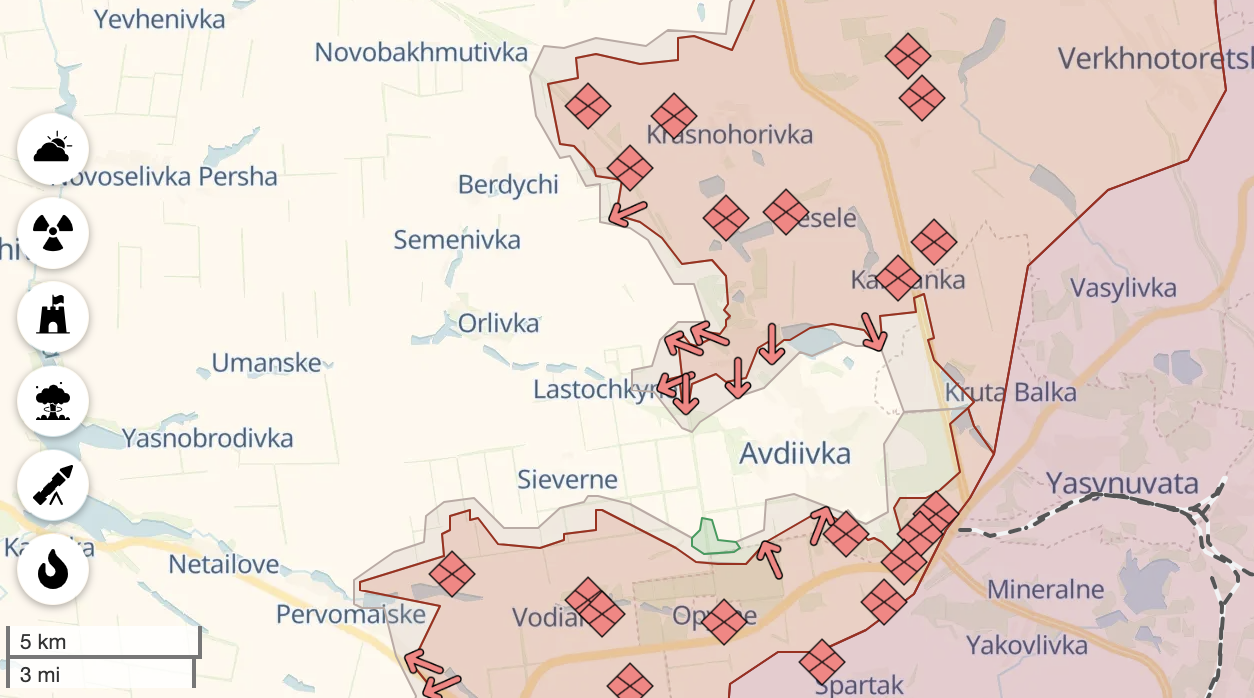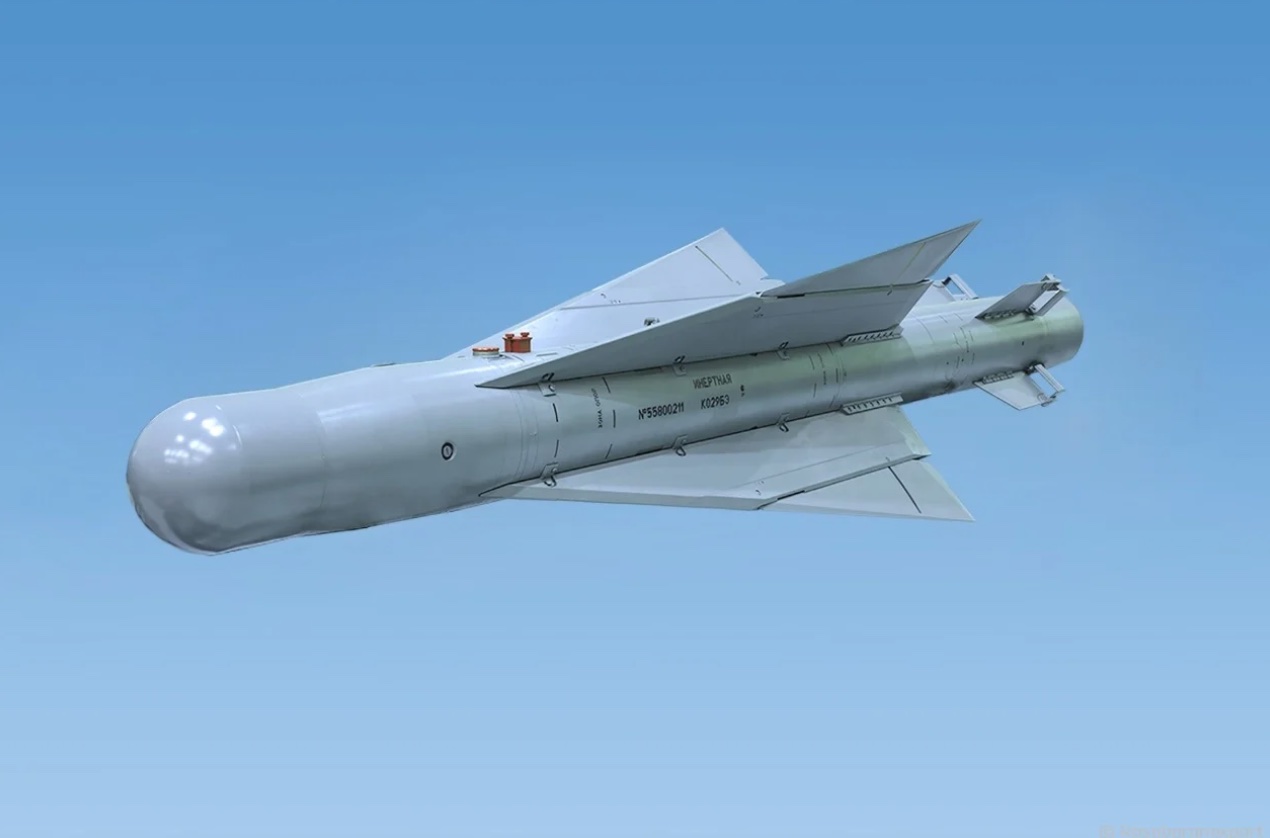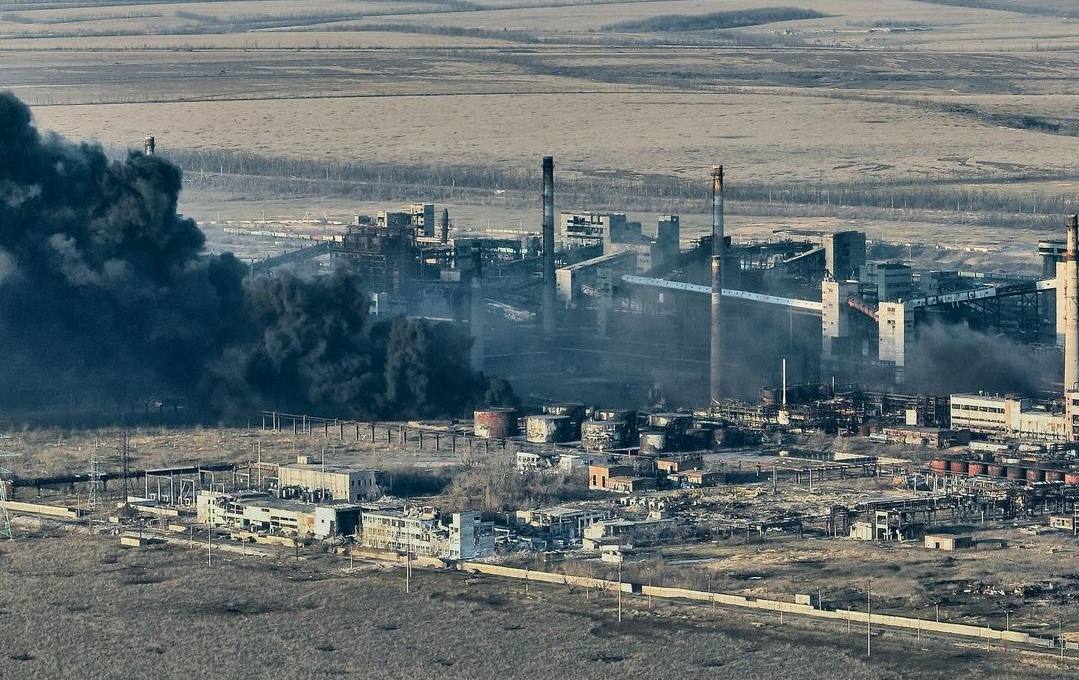Ukrainian troops are retreating from the embattled city of Avdiivka, which Ukrainian troops have defended since 2014. In the last few weeks, the situation rapidly became critical, and Ukrainian troops were nearly encircled.
But until mid-January 2024, the frontline stayed relatively stable, as Ukrainian troops resisted Russian assaults from well-established defensive positions.
Ukraine deployed reinforcements to Avdiivka to organize a retreat
As Russians advanced in a pincer movement on the Ukrainian garrison, the elite Third Assault Brigade was deployed to reinforce the troops, as well as Ukrainian GUR units and the Alpha unit of the SBU.
This led to widespread social media speculation that Ukraine would engage in a months-long defense of Avdiivka, repeating the screenplay of the 10-month-long disputed operation to defend Bakhmut, where Ukrainian troops had destroyed much of Russia's formidable Wagner PMC, albeit at a heavy cost.
However, the real reason for their deployment was to cover the retreat of the units defending Avdiivka: the 47th and 110th brigades, as the Russians encroached on a logistics lifeline to the city.
"While our fighters retreat, the enemy does not stop attacking; it needs to be restrained by someone. Fresh forces provided us with time to withdraw and, moreover, continued to inflict significant losses on the enemy," military expert Oleksandr Museinko told RBC.
Inside the city, the Third Assault Brigade pushed back Russian troops from this main supply road, being extremely outnumbered at a ratio of 7:1.
If in Bakhmut, the Russian attackers were a mix of Wagner convicts and special forces, in Avdiivka, the Russian contingent was the "best strike fist of Russian Federation in Ukraine," consisting of GRU units and Mechanized brigades, the spokesman of the Third Assault Brigade Borodin said, stating that some units were repelling attacks 360 degrees around them.
The main problem was a barrage of guided aerial bombs. Sent by Russian jets far beyond the frontline, beyond the reach of Ukrainian air defense, the powerful bombs reduced buildings to rubbish, forcing Ukrainian units to retreat.
Additionally, Russians launched phosphorous shells at fuel tanks at the Avdiivka Coke Plant, setting them on fire and creating poisonous smog.
Russians use phosphorus shells which set fuel oil tanks at #Avdiivka Coke Plant on fire, spreading smog, 3d Assault Brigade says (🎥)
"Var," commander of 2nd mechanized battalion of this brigade, says the smog has extremely serious consequences for health & lives, poisoning… pic.twitter.com/UMREi1BynN
— Euromaidan Press (@EuromaidanPress) February 16, 2024
"One of my groups changed all their clothes several times in 8 days in Avdiivka, because phosphorus is a constant problem," said Yuriy Chornomorets, a theologian-turned-sniper who supplies snipers all over the Ukrainian front.
In the end, Ukrainian forces managed to retreat, but many were wounded, killed, and left behind.
Tavria operational group commander Tarnavskyi confirmed that Ukraine could not extract all its garrison, stating that "some number" of Ukrainian servicemen were taken into captivity during the retreat from Avdiivka.

This happened under pressure from prevailing Russian forces at the final stage of operation; Ukraine will appeal to international humanitarian organizations and mediating countries to "ensure" Russia treats POWs humanely, he said.
Gaps in the organization of the retreat were exposed in a widely-shared Instagram post of a wounded Ukrainian soldier, who told how the injured waited for evacuation from encirclement near the Zenit district in vain. Their fate remains unknown; possibly, they were taken captive.
Timelapse from @deepstate_ua shows how the situation in #Avdiivka rapidly deteriorated for Ukrainian troops since mid-January.
The rapid Russian advance was facilitated by a surprise Russian operation to get in Ukrainian flanks through an underground pipe & was enabled by an… pic.twitter.com/eszb5afam0
— Euromaidan Press (@EuromaidanPress) February 17, 2024
Why Russia was able to take Avdiivka
Russians had more troops and equipment
Ukrainian defenders faced a barrage of prevailing forces. Maksym Zhorin, deputy commander of the Third Assault Brigade, reported that in some positions, six Ukrainian soldiers repelled assaults of 100 Russians.
As the OSINT group Frontelligence Insight writes, when the Russians initially tried to advance on the well-defended Avdiivka, they suffered disproportionately higher losses in vehicles and personnel than the defenders of Avdiivka.
For instance, a platoon from the 15th Separate Guards Motorized Rifle Brigade was expected to advance three kilometers into Ukraine's defenses on the first day of the assault but lost some 40 BTRs over nine days.
Seeing the high Ukrainian resistance, other Russian brigades abandoned the notion of a mechanized assault and employed more flexible tactics.
"Despite initial errors, high losses, and unrealistic expectations, they continuously replenish their troops with fresh recruits and preserve pressure," Frontintelligence's Tatarigami wrote. Russian POWs captured in Avdiivka told that they were recruited in December and January; although ineffective, these recruits were used to overwhelm Ukrainian defenses.
As the Russians incurred great losses in the operation to take Avdiivka, the 25th Combined Arms Army transferred equipment to the 2nd and 41st Combined Arms Armies for ongoing assaults. As well, elite detachments from the GRU were employed, with basically limitless use of tanks, IFVs, APCs, drones, and aerial bombs.
Meanwhile, Ukraine suffers from an artillery deficit, with its troops rationing shells and using three times fewer of them than the Russians. This is partly because of the EU falling through on its commitment to produce artillery and partly because a Ukraine aid bill has been stalled in Congress over Republican opposition.
President Biden, who has been calling to pass the bill for months, blamed the Avdiivka withdrawal directly on Congressional inaction.
"This morning, Ukraine’s military was forced to withdraw from Avdiivka after Ukrainian soldiers had to ration ammunition due to dwindling supplies as a result of congressional inaction, resulting in Russia’s first notable gains in months," a readout from US President Biden's call with Zelenskyy reads.
Biden called upon Congress to urgently pass the bill authorizing aid to Ukraine that had been stalled for months.
Russian vs Ukrainian forces are 7:1 in #Avdiivka
If in Bakhmut, Russians were mix of Wagner convicts & special forces, here Russian contingent is "best strike fist of Russian Federation in Ukraine," consists of GRU & Mechanized brigades, spox of 3 Separate assault brigade… pic.twitter.com/7oPjIMoqQp
— Euromaidan Press (@EuromaidanPress) February 15, 2024
Also, because Ukrainian units were outnumbered 7:1 in Avdiivka, this did not leave them a chance.
The prevalence of Russian forces generally reflects ongoing Ukrainian mobilization problems. A new bill on mobilization is stalled in parliament as frontline troops are worn out from two years of ceaseless service. This takes a toll on the frontline balance: a recent analysis by Konrad Muzyka reveals that Russia has deployed 95 military units to Donetsk Oblast, while Ukraine only has 56.
However, the issue of mobilization also hinges on Western supplies of ammunition and equipment. There is little meaning in mobilizing more soldiers if they are to be placed under overwhelming Russian artillery strikes with no hopes of retaliation due to ammunition shortages.
Surprise operation in Ukrainian rear and flexible strategy
The situation began to deteriorate after a Russian operation to breach Ukraine's defenses from the flanks by crawling through an old underground pipe. Around 21 January, they emerged by surprise in the Ukrainian rear and quickly took over several blocks, establishing a foothold.
Until then, the situation was relatively stable, Yuriy Chornomorets told Euromaidan Press. But after that, Ukrainian casualty rates grew, as they tend to equalize once urban fighting starts, especially when the enemy has artillery and air support.
The tactics of the Russians also changed: they became more flexible and creative. Instead of frontal assaults, they divided Ukrainian defenders into smaller pockets, identifying weak spots and expanding zones of control through sectors, Frontelligence Insight wrote.
Guided aerial bombs: a weapon that Ukraine cannot counteract
As Russia realized the limitation of mechanized assaults on Avdiivka, being unable to complete their pincer movement in October-December 2023, they shifted focus to destroying the city itself with airstrikes with guided aerial bombs.
Russia's assault of Avdiivka has been enabled by their reinforcement of guided aerial bombs, that simply “wipe out the city and positions" of outnumbered Ukrainian troops, acc. do DeepStateMap.
Here is how Russians strike the Khimiki district as urban fighting rages in… pic.twitter.com/K6jDaZ4bzT
— Euromaidan Press (@EuromaidanPress) February 13, 2024
Ukraine's lack of ammunition for counter-battery fire also allowed Russians to overwhelm Ukrainian defenses with artillery. These barrages made it easier for Russian groups to advance after identifying weak spots, according to Frontelligence Insight.
The bombs completely destroy any positions, reducing buildings to pits, Maksym Zhorin, deputy commander of the 3rd Assault Brigade, told. Russia sent as many as 60 of them a day on Ukrainian positions, in addition to the phosphorous bombs and incessant artillery strikes.
A guided aerial bomb is a simple, high-explosive bomb that usually weighs 250 or 500 kg, rarely - 1000 or 1500 kg. It is a simple high-explosive bomb which were widespread in the USSR, but with an addition: wings and a flight control module. They are launched from an airplane and fly relatively accurately for several dozens of kilometers.
"Like all successful things in wars as big as ours, it is cheap and very effective. A 500 kilogram bomb does not care whether it's sent into a steppe or a concrete city. It collapses apartment buildings like card houses. It does not need exceptional accuracy because it covers all living things within a 100-meter radius, even if they hide in a shelter. People who are hit by the shock wave have to be treated for a long time afterward, even though their legs and arms remain intact on the outside," Ihor Lutsenko, a Ukrainian soldier developing drones, explained.

A guided aerial bomb is similar to a tactical missile in explosive power, but at a fraction of the cost. Russia has a huge stockpile of old powerful bombs and will be using them for a long time. Counting the amount of gliding aerial bombs used by the sides is much more relevant than counting artillery rounds or FPV drones, Lutsenko believes.
While Russia's use of them has escalated, Ukraine uses zero.
In the first ten days of February, Russian tactical aviation launched more than 460 FAB-250, FAB-500m62, FAB-1500m54, and ODAB-500 bombs with UMPC (unified planning and correction modules), according to military analyst Oleksandr Kovalenko.
Ukraine cannot advance on the front if it does not solve the problem of these bombs, Lutsenko stresses.
This means:
- asking Ukraine's partners for combat aviation capable of chasing away the Russian jets firing the guided bombs;
- destroying Russian airfields where jets carrying the bombs take off;
- having special air defense capable of chasing Russian jets away from the frontline;
- creating a Ukrainian version of a guided aerial bomb.
Lutsenko states there exist projects that could overcome Ukraine's current limitation: that Ukrainian aviation is not capable of flying high enough to launch Western-made guided aerial bombs, as Russian air defense systems will hit it. However, these projects have run into bureaucratic roadblocks, he stresses, calling to solve the problem ASAP.
"We will not be able to attack without guided aerial bombs. We cannot use tactical missiles or shells to destroy Russia's deeply echeloned defense and fortifications. The former are too expensive, the latter too weak. We need something cheap and powerful; we need guided aerial bombs," he says.
Ukraine's Air Force spokesman Yuriy Ihnat explained that the bombs are launched 40-50 km away from the frontline. The higher and faster an aircraft drops the bomb, the farther it will travel.
On average, the strike range of guided bombs is 80 km, threatening border and frontline areas.
Shooting down the bombs is very difficult since the launch aircraft stays out of range of air defenses, Ihnat said. While Ukrainian S-300 systems can hit targets up to 75 km away and Buk-M1 up to 35 km, placing these near the front would make them priority targets.
"To counter such Russian attacks, Ukraine needs modern air defense like Patriot and SAMP-T systems, and Western aircraft like F-16s that can stand up to Russian jets at long range," Ihnat stated.
Ukraine's Defense Minister Rustem Umerov confirmed the expert assumptions when he named the lessons Ukraine learned after withdrawing troops from Avdiivka.
He said that Ukraine's Armed Forces need:
- modern air defense systems to prevent the enemy from using gliding air bombs;
- long-range missiles to destroy enemy depots;
- artillery shells.
Making a nod to accusations that Ukraine had not been taking fortifications seriously, as opposed to Russia's professional military engineering troops, he said that they are being built and strengthened.
Why Avdiivka was important
A common version is that Russia spared no manpower or resource to capture Avdiivka by the March "elections" in Russia, where Putin is all but guaranteed a victory. Its capture will score Putin propaganda points in the runup of the vote.
For Ukraine, Avdiivka was important as a major railroad junction and industrial center.
Also, because of the threat of Ukrainian artillery to nearby Donetsk, a major city under Russian occupation, the Russians did not set up warehouses or military hubs there, Oleksiy Hetman, a reserve major in the Armed Forces of Ukraine and a military expert, told RBC. That is expected to now change.
The fall of Avdiivka now opens the Russians the route for Pokrovsk, the next major Ukrainian rear city where citizens try to live their lives as best as possible.
Dmytro Lykhoviy, spokesman for the Tavria operational group, explained the importance of holding Avdiivka to RBC.
"Holding Avdiivka is important to prevent Russian artillery and Russian terror from moving further to the west of Donetsk Oblast. To grind down Russian resources and reserves, to deplete their armada," he emphasized.
Ukrainian defenders seem to have achieved that goal: according to an analysis of visually confirmed losses by OSINTER @naalsio26, Russia has lost 13 times more equipment in Avdiivka than Ukraine.
Russia's losses in Avdiivka exceed Ukraine's 13:1, visually confirmed losses analysis by OSINT analyst @naalsio26 shows
One of the reasons may be Russia's change of tactics to using IFVs, not only infantry groups: https://t.co/8a1e3jNZts
📷https://t.co/ZJ09TiIXcL pic.twitter.com/4tFNGcFPOx
— Euromaidan Press (@EuromaidanPress) February 14, 2024
Now that the city fell, Russia can try to move westward, although experts concur it will need to recuperate from the heavy losses incurred in Avdiivka.
Article was updated to include Umerov's assessment
Related:
- Frontline report: Ukraine prioritizes preserving manpower over holding Avdiivka, withdraws troops
- Aerial bombs enable Russian advances on Avdiivka; encirclement looms

